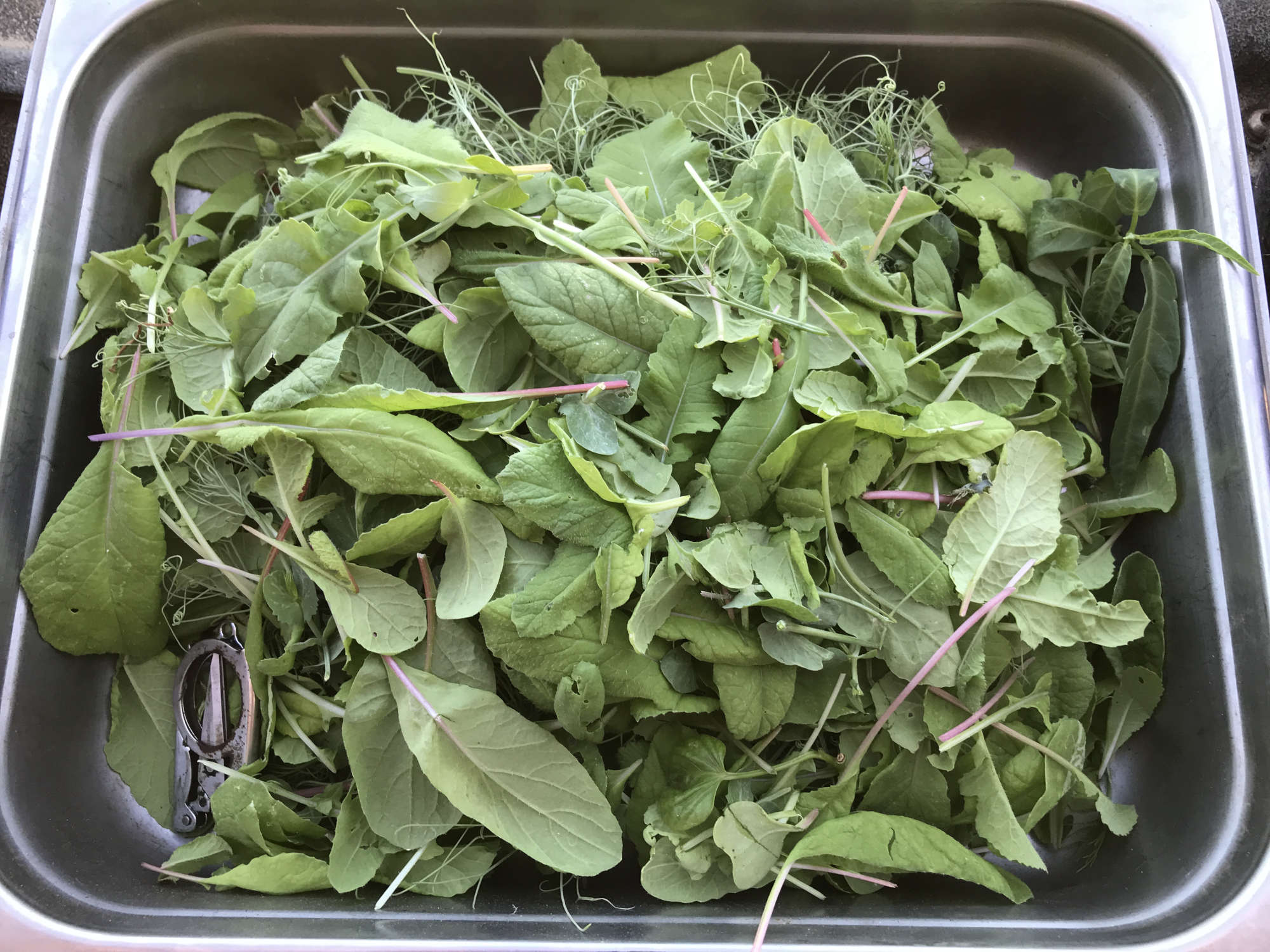
Pea and Radish Greens from Fresh Garden Harvest
Some people call it survival gardening, however there's no consensus on the definition but I'd say generally speaking, that those who consider themselves survivalists will be talking about species selection of plants that are resilient to transplant shock, extreme temperatures, drought, strong winds, poor soil nutrients, etc.
No matter what the exact stressful ecological conditions are, it's the surviving plants that persist while all others die. Another way to think about a survival garden is one that is designed in such a way that as many as possible micro and macro nutrients are grown in close proximity to your dwelling and done so at a human scale. In other words, with as little dependence on outside inputs or heavy machinery after the initial establishment period.
In my current situation, the mature and advanced survival garden is the goal, but for now, it's more of a garden of survivors. Two such survivors, again and again have been peas and radishes. They each produce a variety of yields and can be eaten at various stages. For years I've been jar sprouting peas, cooking them into a soup with other sprouts and spices, or cooking them into a pea soup type of dish. It became a habit to save some of the jar sprouts and plant them out into the garden to later eat both cuttings from the greens then the fresh pea pods as they appeared.
At larger scales I'd soak bulk quantities of peas in a bucket for several hours then scatter-sew them out onto freshly laid food forest compost to be gently raked in then covered by light mulch. From there, I could let them provide green manure, ground cover, along with other functions as well as be a source of on-demand greens.
The first time I got more creative about radishes than simply eating the roots as presented in grocery store or restaurant dishes, was when I bought a small container of radish sprouts and planted them out into a garden after learning that radish greens are edible.
It was amazing to see how prolific they became with very little maintenance. The most powerful aspect being that they're very resilience having their own very rugged supply of moisture and nutrients in the root system. Unlike many other leafy greens that only have very thin hair like root systems that transplant poorly, radishes, like beets can be endlessly potted up, transplanted, and harvested from again and again.
I would soon discover that it could be a life's work to study and master all of the different radish varieties. My experience and research has lead me to believe that daikon radish is the most ideal for survival garden purposes. Just one can be a meal on to itself. They also do great work to break up and loosen soil thus providing better hydration, aeration, and soil life habitat.
I also very much enjoy eating the flowers and fresh radish seed pods which are similar in texture to pea pods though with a more subtle flavor in my still very limited experience.
Needless to say, a large percentage of my bulk seeds stock is comprised of peas, radishes, beets, and other very easy to start and hard to kill plants.